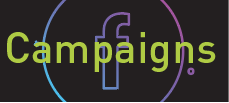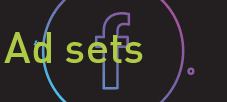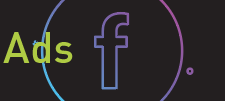Have you ever logged into Facebook Ads Manager and thought, “nope, not today” and closed your browser window, overwhelmed with all of the options. I mean, what is the difference between a Campaign and Ad Set and an Ad. You just want to run ads, right?
Facebook’s Ad Manager is an insanely powerful and complex platform. Knowing how to use it well can help you advertise cheaply and effectively. Not understanding how to set up ads properly can lead to lots of wasted time and money.
Not to worry, setting up Facebook ads can be easy if you stick to a few simple rules and concepts.
The ’ol 1-2-3
The first step to setting up your ads properly is understanding the parts of an ad campaign. Facebook divides advertising into three parts: campaigns, ad sets and ads.

Campaigns: A campaign is simply a set of advertising messages that share an objective. In Facebook ads, the objective is key. For example, maybe you’re interested in getting more brand recognition with your ads. You would set the objective to reach or impressions. Or if you’re trying to drive traffic to your website, you’d set the objective as traffic. If you’re trying to get inquiries you would set the objective as conversions. You can also set your overall campaign budget at this point. That’s it. Pretty easy!

Ad Sets: Facebook divides the campaign further into ad sets. Each ad set will contain multiple ads that share a unifying message. Each ad set should have a single theme. For example, you may want to test a set of ads around farm-to-table options or perhaps you’re interested in telling your audience that your calendar is filling up fast with an “inquire now” message. While you’ll set up all of the ads in the next step, you want to start thinking of the theme now. This is also where you identify the audience you’d like to target based on who you think will respond to your theme’s message.

Ads: Each ad set will contain multiple ads around the unifying theme, you’ve already established. Here is where you upload your ad variations based on alternative images and headlines. By limiting what you test, you can get a clearer picture of what works and what doesn’t so you can replicate success in the future.
Facebook can really be complex, but there are two things to focus on when you’re starting out: audience targeting and split testing.
Audience targeting is crucial. I see so many people still wasting money on targeting a huge geographic area with no additional detail or segments.
Back when advertising was limited to print, radio, TV and billboards, impressions and eyeballs were the most important metric. You wanted your ad in front of as many people as possible, knowing that only a certain percentage would be interested—but you weren’t able to accurately identify who would be most likely to take action or buy from you.
Facebook has changed all of that by allowing you to target specific demographic data, interests, and actions. With Facebook’s powerful targeting options, you can get in front of the right people quickly and cheaply. In other words, you can easily speak directly to people who are most likely to book your services.
Here’s how to target like a pro:
Create an audience based on traffic to your website. If you don’t have Facebook’s ad pixel installed on your website, stop reading this and go do that now. Once the pixel is running on your site and gathering data, you can create a custom audience based on website visits (or even page visits). The idea is that if they visited your site, they’re more likely to be interested in your service.
Target your email list: Again, if someone raised their hand to sign up for your email list, you can assume they’re interested in your service. Keep your brand “top-of-mind” by targeting this group with additional ads.
Create lookalike audiences based on your web traffic and email lists. Once you’ve created audiences based on your web traffic and email lists, you can ask Facebook to create lookalike audiences. These are audiences that have many of the same attributes as your custom audiences, and are therefore more likely to be qualified.
Pro tip: Facebook won’t let you geo-target lookalike audiences. You’ll have to create the lookalike audience first, then create a second custom audience based on the lookalike audience. You can geo-target your new custom audience.
Second, split testing can help you test winning ads quickly and cheaply. Don’t just run one ad at a time—test multiple ads in each ad set.
To set up your tests, create an ad for each image and headline. For example, if you’re testing three images and three headlines, you’ll have nine ads in each ad set.
When you set up your initial ads, set your daily budget for $5 and wait three days for Facebook to learn and optimize. On the third day, you’ll clearly see what is and isn’t working. Toggle off all underperforming ads and raise your daily budget to $10 and wait another three days. By the end of the second three-day sprint, you’ll have the final winning ads you can use to increase budget. Starting with a $5-a-day budget will let you see which ads perform well and avoid wasting money on underperforming ads.
By focusing on targeting audience segments who have already expressed interest in you, you can increase the chances of your ads working to drive traffic and revenue. Proper audience targeting will also allow you to get your ad costs down.
And, by conducting extensive split testing of ads, you can see which audience segments respond well to which ads. This helps you avoid the costly mistake of running a single ad that nobody cares about, and that ultimately fails.
So what if you design great ads, set them up properly, and they *still* don’t work? Next month, I’ll show you how to troubleshoot underperforming ads and get back on the road to Facebook Advertising success.
Join Christie Osborne at Catersource 2019 in New Orleans! Click here for session information and here to take you to registration.



